Hi #AmazingNature Community!
Always wishing everyone a good day. Let's remember that the sun rises for @everyone!😃🌞
Once again, I bring you content that I consider to be of quality, this takes several hours of reading, comprehension and writing.💡📚
But more than that, this is one more publication so that together we can appreciate and contemplate how wonderful our nature is! I prefer the marine and aquatic environment, that is my specialty🐬🐟🦈🦀🐢🐳🐙 I hope you enjoy!🐬🐟🦈🦀🐢🐳🐙🤗
An article by Vera M.F. da Silva
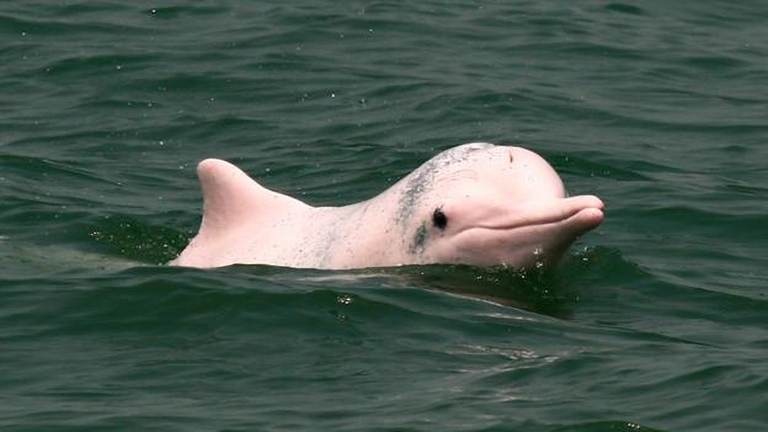
Photo Credit: Aqua Expeditions
I remember when my family found out that I had finally gotten my bachelor's degree as a marine biologist, there were always a lot of questions related to the sea: sharks, coral reefs, dolphins, fish. But the person who asked about the famous pink dolphin never missing, everyone was struck by the extravagant color of this dolphin...
The Amazon river dolphin is also known as "boto" or "botovermelho" in Brazil; also as "bufeo colorado" in Colombia, Ecuador and Peru; y y "pink dolphin" in Venezuela. It is also known in English as a pink dolphin and internationally as a boto (we will call it the Amazon River dolphin in this post😅). It belongs to the Iniidae family (Mead and Brownell, 2005).
The Amazon River dolphin is the largest of the river dolphins with a maximum body length of 255 cm and total weight of 207 kg for males and 225 cm. and approximately 153 kg for females. In them we find an interesting sexual dimorphism (that is, we can easily identify the females from the males) of river dolphins, the males are 16% longer and 55% heavier than the females (Martin and da Silva , 2006). The body is very heavy but extremely flexible. It has a special vertebrae that allow head movements in all directions. The fins are wide and triangular; the dorsal fin is long, low and keel shaped, extending from the middle of the body to the caudal peduncle, strong and flattened laterally. The fins are very large, wide, and paddle-shaped and can perform separate circular motions. Oh, and most importantly, their coloration is PINK, this is why these animals are so curious to people.
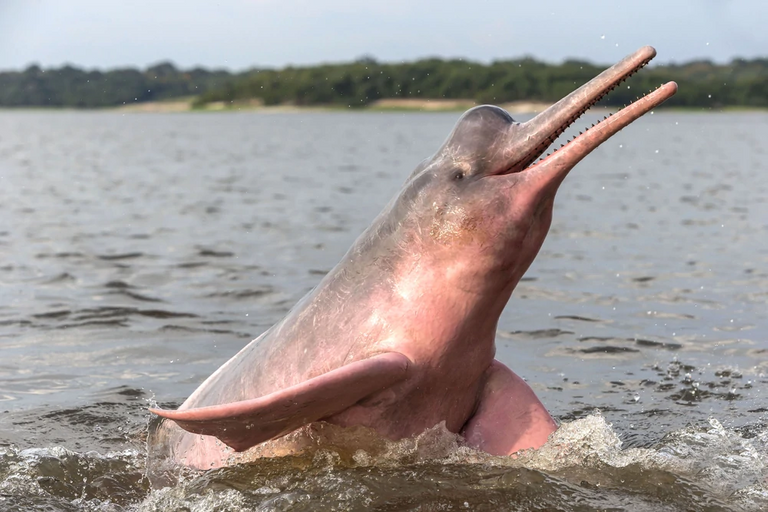
Photo Credit: Natural World (Still cute?)😅
Distribution
The Amazon River dolphin is very widely distributed, reaching almost all the places that it can physically reach without venturing into marine waters, it is a freshwater species. It is also found in six countries in South America - Bolivia, Brazil, Colombia, Ecuador, Peru and Venezuela - in an area of approximately 7 million km2. It can be found throughout the Amazon River and its main tributaries, minor rivers, and lakes, from the mouth near Belém to its headwaters in the Ucayali and Marañón rivers in Peru (Vidal et al., 1997).
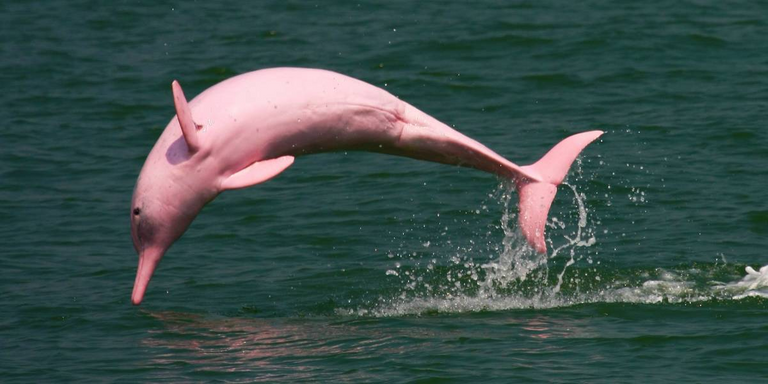
Photo Credit: Animal Picture Society
Ecology
The Amazon River dolphin is active day and night. They go fishing between 06:00 and 09:00 and between 15:00 and 16:00. It feeds on more than 43 species of fish belonging to 19 families! (That is a variety of dishes). The average size of the fish eaten is 20 cm (between 5 and 80 cm), and the large fish they eat are shredded.
Under humane care, a food exchange has been recorded. Daily consumption is approximately 2.5% of body weight. The diet is unique among cetaceans since its dentition is heterodont, that is, it has teeth of different shapes (just like us!) This allows it to attack and crush armored prey (da Silva, 1994).
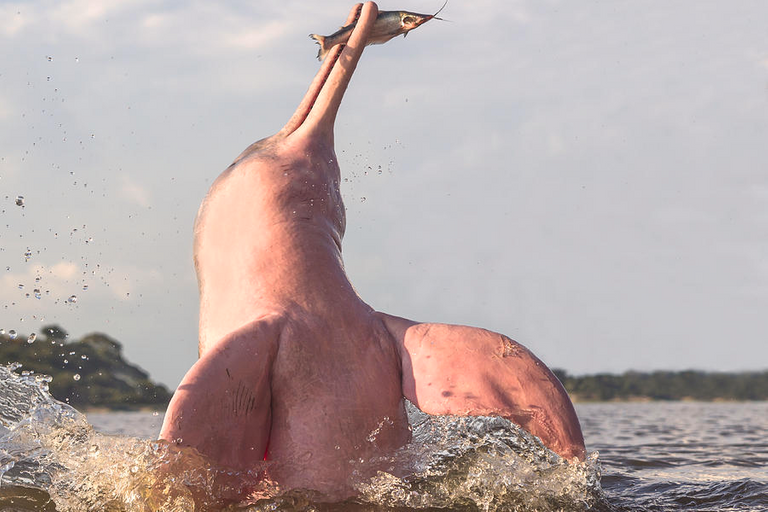
Photo Credit M. Watson
Behavior
The Amazon River dolphin is mostly solitary and is not commonly seen in groups. Group size is generally one to four individuals. Most groups of two are mother-calf pairs, but mixed groups and groups of males are also common. Large loose aggregations can be seen at confluences and curves of rivers and channels due to large concentrations of fish, or for resting and social purposes. The spatial segregation of the sexes occurs among these dolphins, where the proportion of adult males, in the middle and upper waters, is higher in the main rivers and lower towards the innermost parts of the flooded forest, where most of the females and young. During low tide, all available habitats are equally used by both sexes. Studies carried out in the central Amazon, Brazil, have shown that some individuals choose to stay in a particular area throughout the year (Martin and da Silva, 2004).
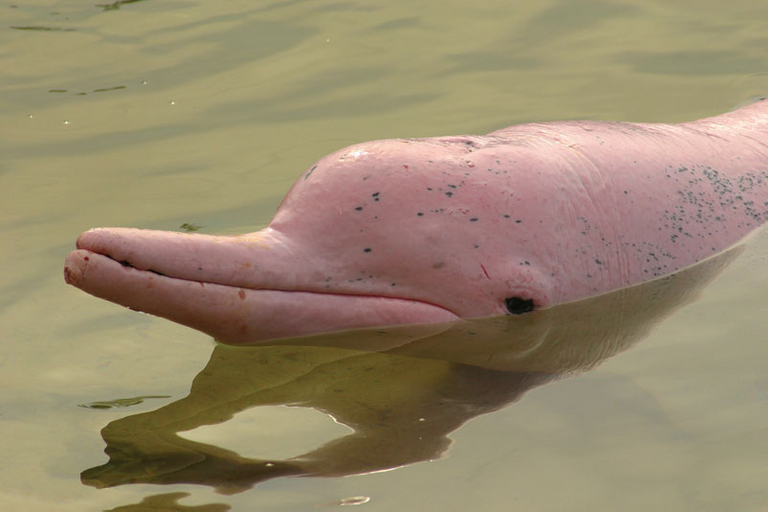
Photo Credit: Ivan Sgualdini
The pink dolphin and humans
The Amazon River dolphin is part of the folklore and culture of the Amazonian peoples, and various legends and myths about the famous pink dolphin are commonly known (I have heard one of them). Due to these legends, they often involve supposed supernatural powers; The Amazon River dolphin was protected and respected in the past, although ancient records mention the use of its oil for lighting. Currently the population is threatened, some people continue to believe in these myths and legends and unfortunately they kill these incredible beings.😔
The local population has used body parts of incidentally captured animals for medical purposes and as love spells. A recent molecular analysis has revealed that most of the eyes are sold in markets in different parts of the Amazon region.
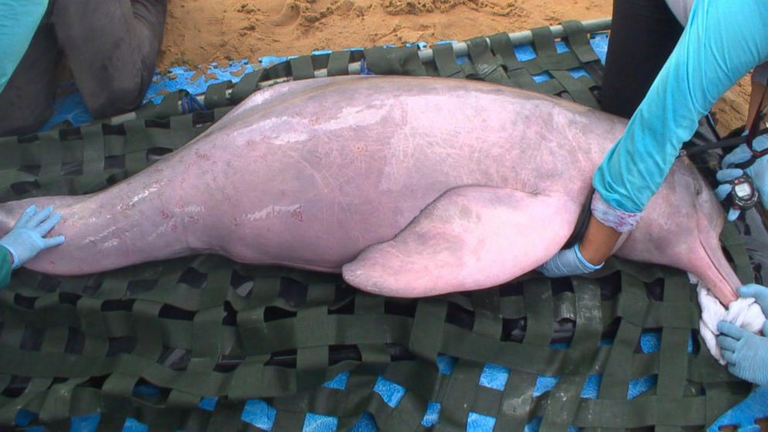
Photo Credit: ABC News
Now that we have the correct information, let's act in favor of nature, if you live near the Amazon River or one day visit that incredible place, take the garbage you use with you, and if possible, help us by spreading this information. Conservation is love for our planet!😃🐬🌎

And that hard work shows. You are becoming one of my fave accounts to follow on here, you have written some fantastic articles, and this is another awesome post!
Thank you very much @dannewton I always appreciate your comments! And you help me keep trying! you make amazing content too😀
Wow, a pink dolphin !! .. I did not know that they even exist ^^ .. Myths and legends were always not beneficial for special creatures as they always ended up in potions and else .. I heard that they nowadays cut of the horns of rhinos in advance to hinder people from killing them to get them.
That´s true @adalger, once a doctor in marine biology who was born in Brazil told us that people's ignorance is killing them😞
@tipu curate
Upvoted 👌 (Mana: 36/45)
Thanks a lot for your support @crazy-andy😀